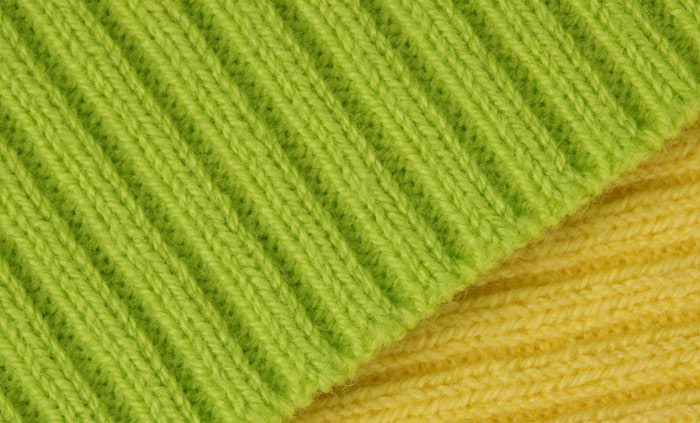Do you remember the famous phrase “we are what we eat”? And what about the clothes that people put on? More and more studies show that shoes, clothes, and accessories are not always safe for the human body.

For the sake of prevention, you should know that some of the materials that your wardrobe items are made from come into contact with the body, have a negative impact on human health and increase the risk of health conditions such as:
- allergy;
- cancer;
- infertility;
- respiratory diseases, and so on.
The danger of clothing for the human body
 Many healthy lifestyle followers are wary of the foods, selecting only healthy and “functional” products. Prevention has long made people pay attention to the labels of their household chemicals and cosmetics, avoid parabens, sulfites and other harmful substances. The time has come to have a closer look at the wardrobes and test the safety of clothes, which cover the human body from bad weather and prying eyes, but at the same time can make it vulnerable to diseases.
Many healthy lifestyle followers are wary of the foods, selecting only healthy and “functional” products. Prevention has long made people pay attention to the labels of their household chemicals and cosmetics, avoid parabens, sulfites and other harmful substances. The time has come to have a closer look at the wardrobes and test the safety of clothes, which cover the human body from bad weather and prying eyes, but at the same time can make it vulnerable to diseases.
Dyes and other toxic substances are often included in the materials of which dresses, sweaters, scarves, socks and other wardrobe items are produced.
Some fabrics, from which modern clothes are made, contain:
- formaldehydes;
- brominated flame retardants;
- perfluorinated chemicals (Teflon);
- insecticides etc.
As a result, some wardrobe items produced by unscrupulous manufacturers increase the likelihood of developing allergies and other serious diseases.
Learning the history of synthetic materials
- One hundred years ago, clothes were made solely from natural materials, such as cotton, flax, wool and silk. At the beginning of the last century, synthetic fabrics were developed. The first truly synthetic nylon fiber was produced from toluene in 1924 by the DuPont company. It quickly became the most popular material for women’s tights.
- It took “DuPont” 24 years to develop nylon’s competitor and another synthetic material, orlon.
- In 1952, the same company began to produce acrylic fiber that has revolutionized the industry, saving time and effort of many housewives, and received its unofficial nickname “wash-and-wear”.
- In 1953, fabrics from polyester fiber, or simply polyester, appeared. The second name for this material was “wrinkle free”.
- In 1959, spandex was produced. It became the basic material for the production of sportswear, swimsuits, and thermal underwear.
- The more synthetic clothing people have in the wardrobe, the greater risk to their body they face.
- Allergy is the result of frequent wearing synthetics.
The allergy caused by exposure to hazardous chemicals when in contact with synthetic fabrics can have such symptoms as:
- skin rashes;
- nausea;
- excessive fatigue;
- burning;
- itching;
- headache;
- shortness of breath etc.
If there are “mysterious” symptoms of allergies of unknown etiology, they may be caused by clothing.
Some other side effects of the most popular fabrics

About 8,000 different chemicals are used to manufacture clothing. Let us dwell on the most popular and dangerous ones. Fabrics that do not require special care and do not crumple often release formaldehyde, associated with the risk of developing lung cancer pathologies, contact dermatitis and other problems. Many unscrupulous manufacturers produce materials with formaldehyde.
In 2008, consumers sued the famous lingerie manufacturer Victoria’s Secret over allergies to the material of the brand’s bras, and the case was widely spoken about. Water-repellent materials include fluoropolymers (Teflon), which are considered a threat to human health in the United States, even though they become toxic only at a temperature of 190°C.
Disperse blue dyes provide magnificent royal shades. However, they increase the likelihood of developing contact dermatitis. Moreover, washing does not reduce this risk. Marines, who were part of the US troops in Iraq, were banned to wear synthetic clothes, such as polyester, acrylic, or nylon, which are easy to melt at high temperatures and lead to skin damage.
In 1971, a special material that prevents fire was developed. It contained brominated flame retardants with additives. However, subsequent research and laboratory analysis of urine tests showed that these chemicals easily penetrated into the body. Animal tests demonstrated that these chemical substances caused gene mutations, cancer and infertility. Therefore, brominated flame retardants were banned for the production of children’s clothing in the United States in 1977, but continued to be used as part of the materials for upholstered furniture, etc.
Back in 1993, the results of the study of Egyptian scientists were published. They conducted an interesting two-year-long experiment on dogs (male dogs) that were divided into three groups. 12 lucky dogs from the first group had to parade in cotton underpants during the period of the study. 12 dogs from the second group were not so lucky – they were dressed in polyester pants. The remaining 7 male dogs from the control group did not wear any underwear, just as it was prescribed to them by Mother Nature.
When the time of the experiment elapsed, it was revealed that wearing polyester resulted in a significant decrease in sperm cells and testicular degeneration. The animals, wearing cotton underwear, and the dogs from the control group did not demonstrate any pathological changes. Scientists have suggested: spermatogenesis is affected by electrostatic potentials generated by polyester fabrics.
Rules of prevention that will make clothes safer
 Clothing, shoes and accessories made of organic materials are becoming more popular. They win back the previous positions, which they lost to synthetic materials.
Clothing, shoes and accessories made of organic materials are becoming more popular. They win back the previous positions, which they lost to synthetic materials.
Today, natural cotton is fashionable. It remains the “king” of textiles. Some of the best natural materials also include flax, wool, silk, and hemp fabrics.
Here are some prevention tips, which will help to gather wardrobe items that are safe for the health.
Start small: replace synthetic bras, pajamas, and other underwear, which is closest to the body, with the natural fabrics. Changing the entire wardrobe is an idea that many people cannot afford. Therefore we recommend not to buy new shirts, pants, dresses and other wardrobe items made of synthetic materials. Choose only organic clothing!
Try to buy the clothes of famous brands, who value their own name and pay special attention to the quality of their products, using organic materials for manufacture.











